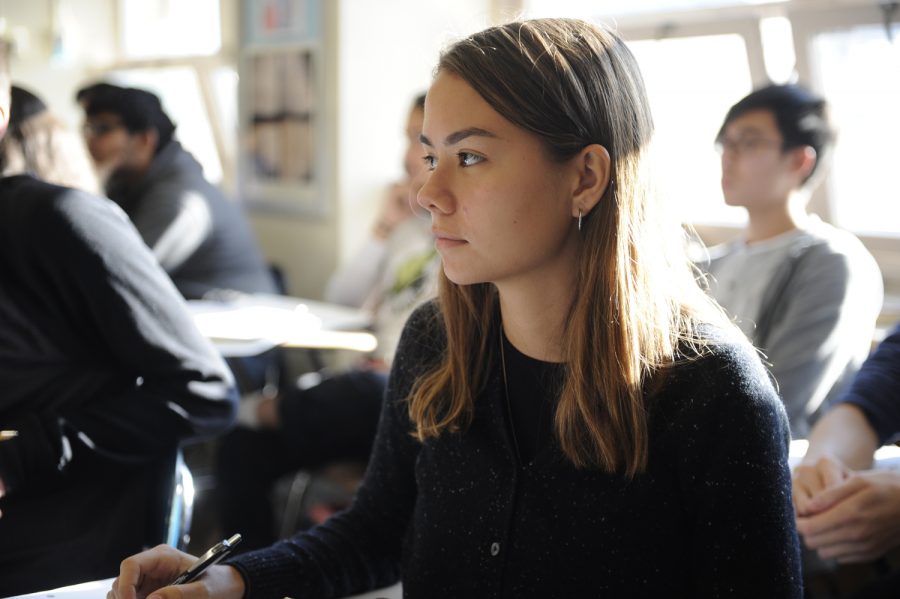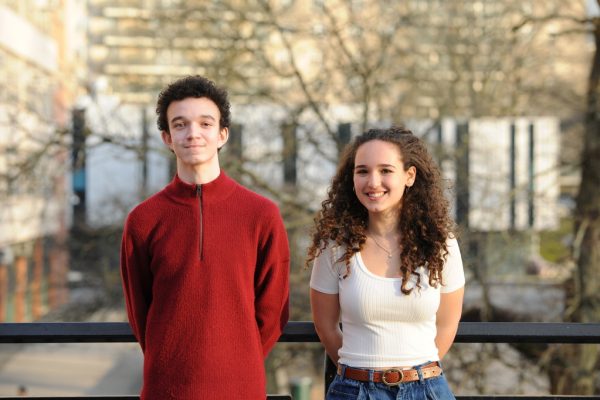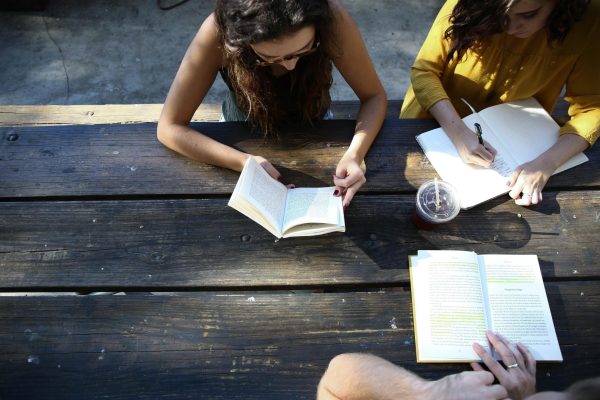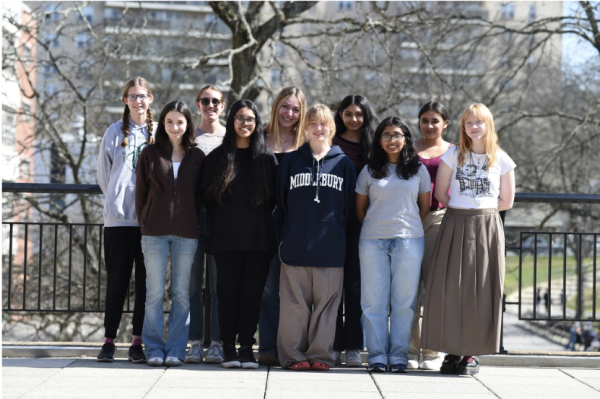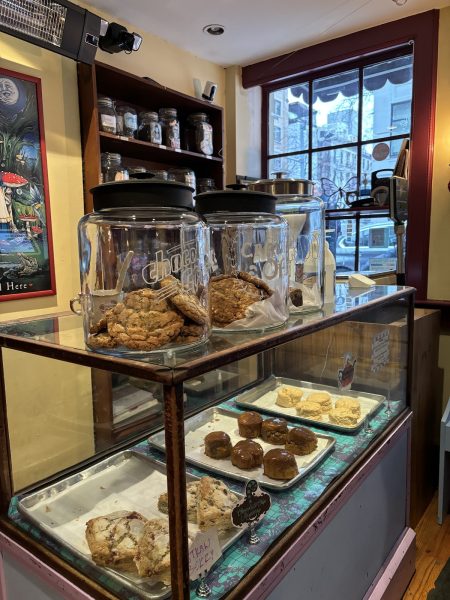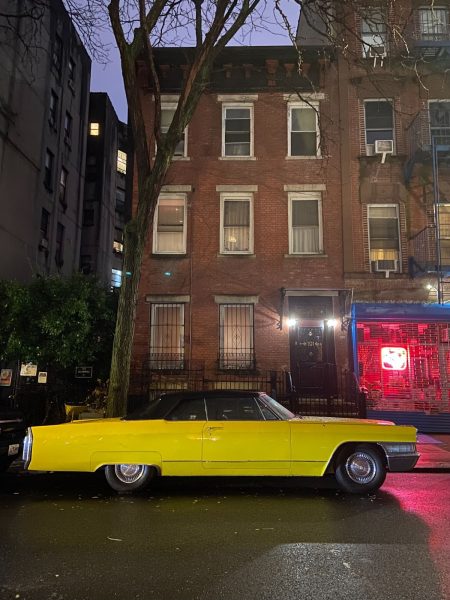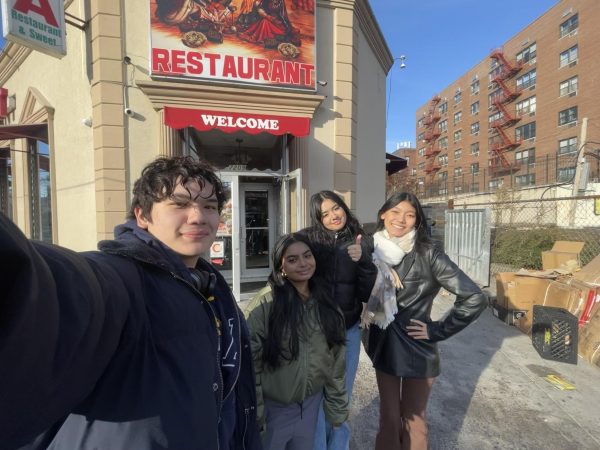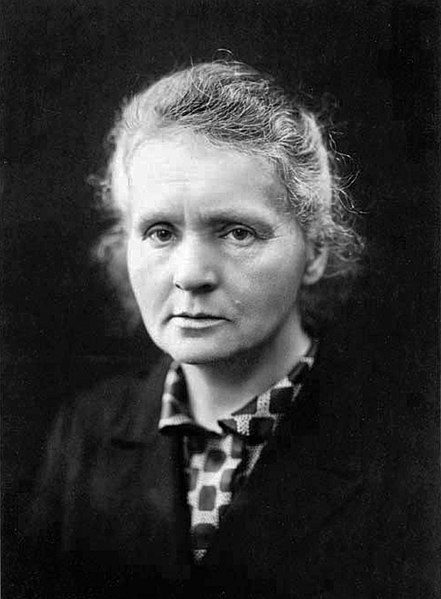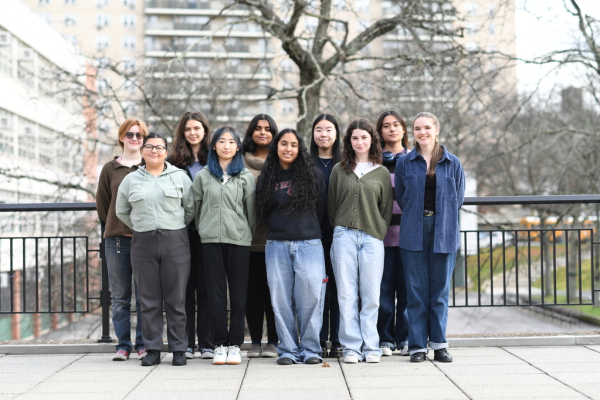American Studies: An Exciting New Course Offering Bridging Two Departments
Katarina Kovacevic ’20 listens attentively to Dr. Abrams during her second period American Studies class.
In English class last year, a woman walked into my classroom and handed out papers to the entire class. Everyone identified the woman as Dr. Abrams. The paper read, “American Studies with Dr. Abrams and Dr. Davis.” As she explained to everyone what American Studies is, we all stared in confusion.
“By that point there was a lot of planning done for the course, so I was very excited to share the news to make it more visible,” said Dr. Abrams.
Last year during the course selection process, sophomores were given an option to take AP American Studies. So, what is American Studies? It is a combined course consisting of both A.P. U.S. History and A.P. Language and Composition curriculums. This is the first time Bronx Science has ever connected two courses. Dr. Abrams and Dr. Davis proposed the course together, inspired by their own experiences as graduate students. Over four hundred students applied for the course, but only one hundred and thirty two students were accepted due to course size limitations.
“Teaching humanities as a combination of history and English is common practice at the college level, and we thought it would be worthwhile to experiment with combining the disciplines at Bronx Science,” Dr. Abrams and Dr. Davis said.
Dr. Abrams and Dr. Davis initiated the course with the hope of fostering more connections between literary and historical texts. These connections would help students analyze texts in a theme-based manner.
“We hope that students are inspired to read and write more thoughtfully and to appreciate the value in doing so.”
The course focuses on the impact of significant events and ideas that shaped American culture and identity. Students learn to analyze how these ideas are reflected in American literature. Reading historical literature allows students to interpret the ambiguity of the author’s purpose for themselves. The use of English language and how it has evolved is also a prominent theme in the course.
“American Studies really encourages you to think outside the box and connect ideas that are seemingly unrelated,” said Kevin Chan ’20. “Dr. Abrams and Dr. Davis are two of the best teachers I have ever had. They express a tremendous amount of concern for their students through their manner in class and their assignments,” he added.
Reading historical texts also allow students to understand how historical figures use literary devices in their writing to manipulate their audiences. Through this, students are able to evaluate the recurring themes of literacy, agency, identity, and community formation.
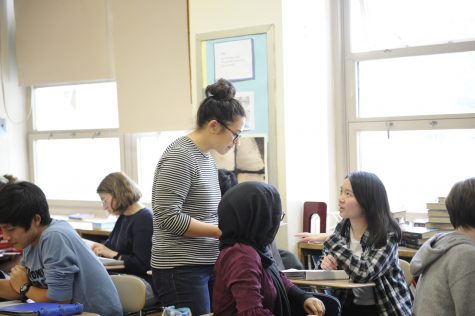
Dr. Abrams helps a student to improve her work during her American Studies class.
“The two classes are very connected, and we learn about the same topics in different perspectives, which is really interesting,” said Bianca Vama ’20.
The course teaches students to ask themselves what what it means to be American, a concept that has changed drastically over the years.
Dr. Abrams and Dr. Davis are optimistic about the course. They enjoy teaching American Studies and hope that the students enjoy the course as well. “I was very excited and hopeful on the first day of school. There is so much more planned for the year,” said Dr. Abrams.
“We hope that students are inspired to read and write more thoughtfully and to appreciate the value of doing so,” Dr. Davis said. “We also hope to make the following feedback loop visible—the nation influences individuals as individuals influence the nation,” he added.
Pinkey Lam is the Managing Editor for ‘The Science Survey’ and her job is to ensure that deadlines are met so that the newspaper is ready for print...
Pamela Li is a Copy Editor for ‘The Science Survey’ and a Senior Staff Reporter for ‘The Observatory.’ She finds journalistic writing appealing...

